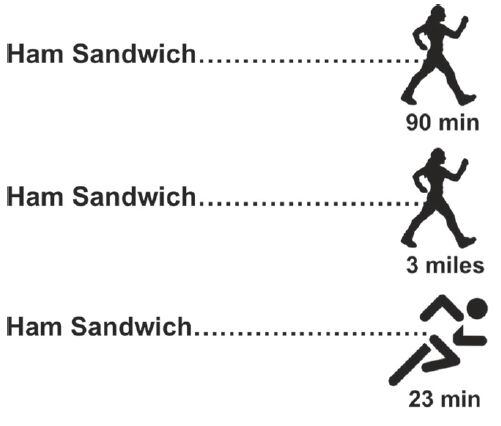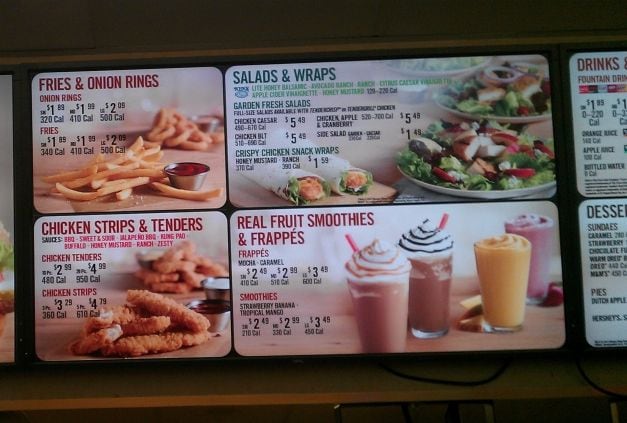The authors of ‘Simplifying healthful choices: a qualitative study of a physical activity based nutrition label format’ - published online in Nutrition Journal - ran three 90-minute focus groups to explore the merits of ‘physical activity equivalent’ or ‘energy balance’ labels with 20 US adults aged 25+ (13 women and 7 men from a mixture of ethnic backgrounds).
The research comes as restaurant chains with 20+ outlets prepare to roll out calorie information on menus as part of the Affordable Care Act.
Its goal was to provide a qualitative assessment of whether consumers understand energy balance labels, rather than a quantitative assessment of their impact on food choice, note the authors, who recently tackled the latter question in a web-based study published in Appetite (click here).
This second study found that consumers shown theoretical menus chose foods with fewer calories where menus featured energy balance labels rather than calorie labels alone. However, whether the labels are effective in real-life scenarios now needs to be tested, said the authors.
Some consumers can find energy balance labels demotivating
Research looking at the impact of calorie labeling alone on menus has generated mixed results to date, with some studies showing that they drive positive changes in behavior and others showing that diners pay little attention.
As for energy balance labels, there has been less research, but one 2008 study (click here) found that some European consumers felt they were “demotivating and patronizing” - although other consumers reacted more enthusiastically.

The positive thing emerging from the recent focus groups is that energy balance labels were at least easily understood, although there was much debate about which physical activity to depict (walking, running, swimming), said the authors.
Broadly, participants felt walking was the best activity to use on icons as it was something that most consumers could envisage doing - unlike running, or certain sports, the said. Focus group participants were however split over whether to depict walking in terms of miles (how far you’d need to walk), or minutes (how long you’d need to walk for) to burn off the calories.
“In contrast to calorie labels, participants shown physical activity labels asked and answered, How does this label apply to me? “, noted the authors.
“This shift toward personalized understanding may indicate that physical activity labels offer an advantage over currently available nutrition labels.”
NRA: Smaller portions is a top trend on menus now

Speaking with FoodNavigator-USA about calorie labels on menus, which some chains have already started to roll out, National Restaurant Association director of nutrition Joy Dubost, PhD RD CSSD, said that it was too early to determine their impact on consumer behavior.
But they had made some members think more about what might be an appropriate portion size, while a growing number of chains are now highlighting options containing under 600 calories on menus, she said.
“Smaller portions is a top trend on menus now, and many chains are offering a broader range of options and incorporating more produce into dishes, which typically reduces the calorie content.”
CSPI: Diners still have to exercise tremendous discipline to avoid exceeding daily calorie requirements when eating out

However, according to the Center for Science in the Public Interest, while most major chains now highlight lighter options on menus, diners still have to exercise tremendous discipline to avoid exceeding daily recommendations on calories, fat, sugar and sodium for an entire day in a single sitting, or even single serving. Click here.
Speaking to us in February, CSPI director of nutrition policy Margo Wootan said that eating out can feel like “swimming upstream”, adding: “We need to totally rethink the way we eat out. It’s not an occasional treat anymore. For many people, it’s lunch every day, and maybe breakfast and dinner a few times a week.” Click here.
Source: Nutrition Journal June 6, 2013, 12:72 doi:10.1186/1475-2891-12-72
‘Simplifying healthful choices: a qualitative study of a physical activity based nutrition label format’
Authors: Jonas J Swartz, Sunaina Dowray, Danielle Braxton, Paul Mihas, Anthony J Viera
